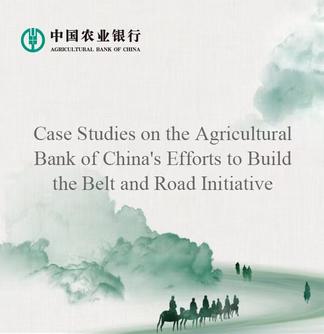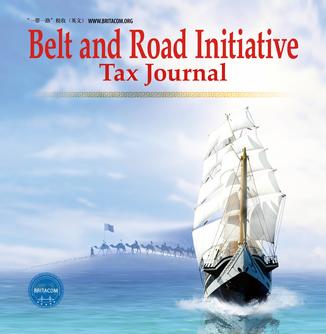An Italian guest tries Hanfu at a Hanfu base in Caoxian County, east China's Shandong Province, April 8, 2025. (Xinhua/Guo Xulei)
JINAN, May 13 (Xinhua) -- In an exhibition hall in east China's Shandong Province, Italian fashion blogger Camilla Pedersini explored with rapt attention, carefully learning the intricate process of Hanfu making before slipping into her first Hanfu outfit.
"This kind of clothing is gorgeous," she marveled. "It brings you back to ancient times. Chinese culture is fascinating."
Hanfu, the traditional attire of China, has evolved over the centuries and in recent years has enjoyed a revival, driven by a renewed interest in traditional culture among young people and its growing visibility on social media platforms. Yet, few people know that the country's largest Hanfu production hub is Caoxian County in Shandong.
Caoxian's connection with Hanfu started about 17 years ago, when a few villagers began experimenting with making Hanfu costumes for photo studios and performances. With the rise of e-commerce in China, local Hanfu makers opened online stores and were pleasantly surprised by the strong demand for their dresses.
With a population of over 1.3 million, Caoxian is now home to 2,753 Hanfu businesses. Last year, the county's combined online and offline Hanfu sales surpassed 12 billion yuan (about 1.67 billion U.S. dollars), accounting for nearly half of the national market share. In the first quarter of 2025 alone, Hanfu sales exceeded 3.14 billion yuan, marking an increase of 15.8 percent from last year.
A woman sells Hanfu via livestreaming in Ancailou Township of Caoxian County, east China's Shandong Province, July 6, 2023. (Xinhua/Guo Xulei)
In Caoxian's Ancailou township, workers at Huaqianyuexia Textile Co., Ltd. are bustling to fulfill a flood of orders. Six jacquard machines run around the clock, producing 600 meters of fabric daily for the horse-faced skirt, a distinctive Hanfu style known for its high, flat front and pleated sides.
There has been particularly strong demand for the horse-faced skirt. "We have orders for around 10,000 meters of fabric to be delivered by the end of June," said An Peng, general manager of the company. "While we're working flat out to complete these orders, new ones keep coming in."
In the face of a booming Hanfu market, innovation has become key. Luoruyan, a designer brand where a single dress can sell for thousands of yuan, has embraced this trend. Last year, it launched its "fragrant Hanfu" line, incorporating fibers from flowers such as peony, rose and lotus blossom into the fabric.
"We would like to find a way to inject modern fashion into traditional Hanfu," said Yao Chixing, founder of the brand.
He added that the brand has also collaborated with universities to develop an antique-style brocade weaving technique in an attempt to successfully restore traditional patterns with over 90 percent accuracy. They have also introduced an "AI+ Hanfu" intelligent design system, which has already generated more than a thousand innovative patterns using algorithms.
"The Hanfu industry is a vivid manifestation of the vitality of Chinese culture," said Pan Lusheng, chairman of the China Folk Literature and Art Association.
A staff member sews Hanfu in Caoxian County, east China's Shandong Province, July 6, 2023. (Xinhua/Guo Xulei)
The Hanfu dresses made in Caoxian have been exported to more than 20 countries, including the Republic of Korea (ROK) and Italy.
At the beginning of this year, when Luoruyan launched its clothing line-up themed on Chinese New Year celebrations, the company quickly received orders for over 100 pieces from Britain.
"To meet the demand of the international market, the company has not only created customized designs but also modified patterns and expanded the range of sizes to ensure that overseas consumers can find dresses that fit," Yao said.
Seeing the business opportunity, Hu Chunqing, who holds a doctorate in material processing engineering, moved to Caoxian in 2018 with his wife to launch their own brand. Thanks to social media platforms like TikTok and Facebook, he managed to expand his overseas market.
"We used to sell our dresses mainly to Southeast Asia," said Hu. "Now, with a significant increase in inquiries from clients in Europe, Japan, ROK, America, South Africa, and the Middle East, we are working hard to expand the export channels for our Hanfu."
Models present Hanfu on the stage during a Hanfu launch event in Caoxian County, east China's Shandong Province, April 10, 2025. (Xinhua/Guo Xulei)
At the third Caoxian Hanfu cultural festival in April, five individuals from Egypt, Russia, Brazil and Italy, including Camilla Pedersini, were appointed as ambassadors to promote Hanfu overseas.
"This is not only fashion, but also a vivid expression of Chinese traditional culture," she said. "In China I see that creativity is deeply rooted in its culture, which is inspiring."
"In an era when China-chic is on the rise, Hanfu is not only a carrier of traditional Chinese culture, but also a name card of the country on the international fashion stage," said Cao Jiachang, president of the China Chamber of Commerce for Import and Export of Textiles.




 A single purchase
A single purchase









